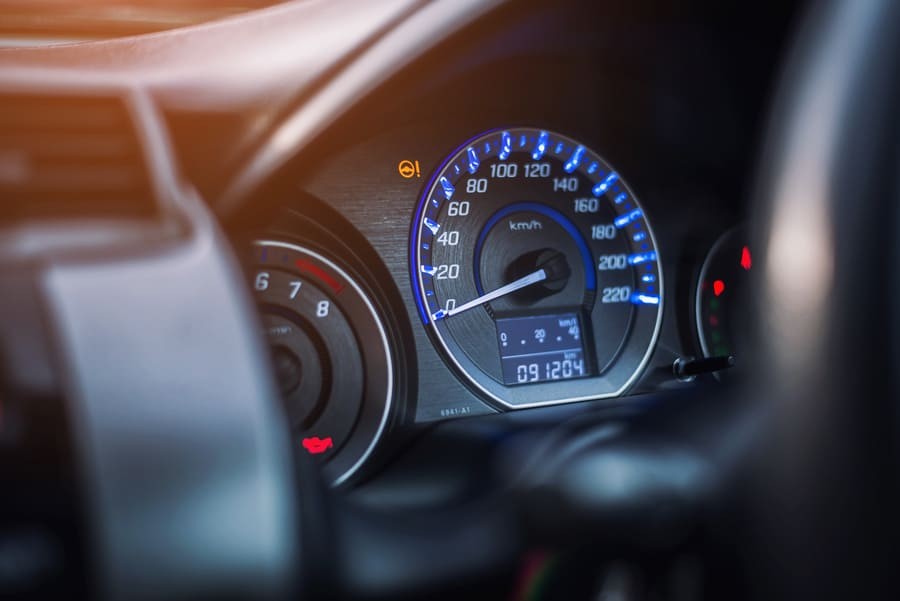When you’re in the market for a car, especially a used one, mileage is often one of the first things you check. It’s a simple number that seems to tell a straightforward story about a car’s life. But is high mileage always a deal-breaker? As a key metric for a car’s lifespan, mileage can be deceptive. It’s more than just the distance a car has traveled; it’s about understanding what those miles really mean.
High mileage can indeed signal a higher likelihood of needing maintenance and repairs. This is why the odometer reading is a crucial factor when evaluating a used car. The real question isn’t just about the number on the dash, but how much reliable driving you can expect from a car that has already covered a significant distance.
You might have heard the myth that once a car hits 200,000 miles, it’s on its last legs, destined for the scrap heap. While this can be true in some cases, it’s far from the whole picture.
But what mileage actually qualifies as “high mileage”? And more importantly, should seeing a high number on the odometer automatically deter you from buying a used car?
In this article, we’ll delve into the question of What Is A High Mileage For A Car, and explore the other crucial elements that contribute to a vehicle’s value and long-term reliability. We’ll help you look past just the numbers and become a smarter used car buyer.
Decoding Mileage: It’s Not Just About the Number
Generally speaking, the benchmark for high mileage on a car starts when it exceeds the average annual driving distance. Mechanics often consider around 12,000 miles per year, or roughly 1,000 miles per month, as the average car usage. Anything above this can be considered high mileage in terms of yearly accumulation. So, for instance, a three-year-old car with 40,000 miles might seem low mileage at first glance, but actually falls into the higher range for its age.
However, when mechanics and car enthusiasts talk about “high mileage,” they typically refer to vehicles that have clocked 100,000 miles or more on the odometer. This 100,000-mile mark is often a psychological barrier for buyers, and many car warranties don’t extend beyond this point.
But here’s the crucial point: a car’s mileage alone is often a poor indicator of its actual condition. In fact, a car that has been driven regularly can often be in better mechanical shape than one that has been used sporadically or left sitting idle for extended periods. Cars are built to be driven!
Mileage is just one piece of the puzzle. The real question you should be asking is: how well has this car been maintained and cared for? A car’s longevity and reliability are heavily influenced by its make and model, the previous owner’s maintenance habits, and the types of driving it has endured.
The Importance of a Car’s Maintenance Record
The level of care a car has received is arguably the most significant factor in determining its durability over time. A meticulously maintained car, even with high mileage, can easily reach 200,000 miles or even surpass it.
When buying a used car, always try to get insights into its history of care. Ideally, the seller should provide information about its maintenance schedule and driving conditions. Was it primarily used for daily commutes, business travel, or occasional weekend trips?
Key aspects to inquire about and look for include:
- Regular Oil Changes: Consistent oil changes at recommended intervals are vital for engine health.
- Spark Plug Replacements: Spark plugs degrade over time and mileage, affecting engine performance.
- Regular Cleaning: While cosmetic, regular cleaning can indicate an owner who cares about their vehicle.
- Parking Habits: Was the car typically parked in a garage, protecting it from the elements, or left exposed outdoors?
- Frequency of Use: Was the car driven regularly, or did it sit idle for long stretches? Regular use helps keep engine components lubricated and prevents issues from inactivity.
Crucially, always request the car’s service record. This record should detail both routine maintenance and any major repairs. However, be aware that if a car has had multiple owners, obtaining a complete and reliable service history can be challenging. This brings us to the next important consideration.
Understanding How the Car Accumulated Its Miles
There’s no magic number that definitively labels a car as having “too many miles.” However, understanding the type of miles a car has accumulated can give you a much clearer picture of its remaining lifespan.
Imagine you’re choosing between two identical cars. Car A has 50,000 miles, and Car B has 70,000 miles. Your initial instinct might be to choose Car A, assuming lower mileage equates to less wear and tear.
But consider this: What if Car A was used extensively as a city car, perhaps even as part of a car-sharing program? And what if Car B was privately owned by someone who primarily used it for highway commuting between towns? Would this change your perspective?
A car used primarily for city driving endures significantly more wear and tear on components like the clutch and brakes due to frequent stop-and-go traffic. Short trips, common in city driving, often mean the engine doesn’t fully warm up, reducing the effectiveness of engine oil in protecting internal parts. Furthermore, cars in car-sharing schemes often experience less gentle handling compared to privately owned vehicles.
Conversely, a car used mainly for highway driving experiences less stress on many components. On the highway, the clutch and brakes are used minimally, and the engine operates at a consistent, relatively low RPM, which is kinder to internal parts. Highway miles also tend to be “easier” miles, with less risk of bumps, scrapes, and the general wear and tear associated with urban driving. Longer, consistent drives also allow the engine to reach its optimal operating temperature, maximizing engine oil performance.
The Impact of the Number of Previous Owners
Generally, a car with fewer previous owners is a more desirable find in the used car market. The more owners a car has had, the greater the potential for unreported accidents, neglected maintenance, or other hidden issues.
Single-owner cars are often considered the “holy grail” for used car buyers. They offer a higher chance of obtaining a complete and accurate service history and a clearer picture of the car’s past. It’s also typically easier to gauge how well the car was treated by a single owner.
However, even the number of owners needs to be considered in context. What kind of driver was the previous owner (or owners)? Were they aggressive drivers, hard on the brakes and acceleration? Or were they more relaxed and careful drivers? The driving habits of previous owners can significantly impact a car’s condition, regardless of the number of owners.
When you’re considering purchasing a used car, don’t let the odometer reading be the only factor in your decision. By doing your due diligence and looking beyond just the mileage, you might discover a fantastic deal on a reliable car with plenty of life left. A car with slightly higher mileage but a solid maintenance history and gentle usage could be a far better buy than a low-mileage vehicle with an unknown or questionable past.

